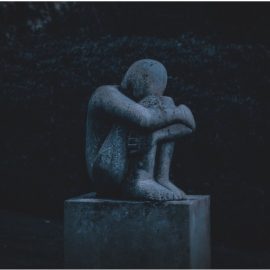

This article gives you a glimpse of what you can learn with Shortform. Shortform has the world’s best guides to 1000+ nonfiction books, plus other resources to help you accelerate your learning.
Want to learn faster and get smarter? Sign up for a free trial here .
Do you feel out of control of your life? How do you stop feeling like a victim of circumstance and start taking an active role in directing the course of your life?
Many people live in constant fear and anxiety because they don’t feel in control of their lives. However, what they don’t realize is that the reason they don’t feel in control is that they aren’t willing to take control, which requires taking responsibility for their actions.
Here’s how taking responsibility for your actions can help you let go of victimhood and seize control of your life.
Taking Ownership of Your Life
You are always 100 percent in control of yourself. When you take full responsibility for your actions, you hold unlimited power to control your destiny. Taking responsibility for your actions means you are completely responsible for what you do and don’t do, as well as your response to what happens to you. You don’t blame bad luck or outside circumstances.
People think they take responsibility for their lives, but many point to outside factors when things don’t go their way. Victimhood lets you off the hook when problems occur. For example, say you’re late to work. If you’re not taking full responsibility for your life, you blame the traffic or something that delayed you. But if you take 100 percent responsibility, you’d understand you should have left sooner or been more prepared before you left the house.
TITLE: The Compound Effect
AUTHOR: Darren Hardy
TIME: 26
READS: 30.4
IMG_URL: https://www.shortform.com/blog/wp-content/uploads/2020/01/compound-effect-cover.jpg
BOOK_SUMMARYURL: the-compound-effect-summary-darren-hardy
AMZN_ID: B005P1YCNK
Responsibility Isn’t Fault
Many people equate taking responsibility for something with being at fault or to blame for it. But responsibility and fault are different things.
For example, a man who had trouble getting dates decided it was because he was short. He blamed women for being shallow and he felt lonely and helpless to change things. His problem was that he chose a poor value (height), and didn’t take any responsibility for solving his loneliness problem. He could have chosen a different value, for instance dating women who accepted him for who he was—thus taking responsibility for solving his problem.
The short man looking for dates wasn’t at fault for being short (he didn’t choose the circumstance and can’t easily change it), but he was responsible for how he responded (he could choose to respond in ways that made him either miserable or happy).
We aren’t to blame for everything that happens to us (for instance, a traumatic childhood), but we’re still responsible for how we respond today. Being responsible for experiences that aren’t our fault is part of life.
You alone are responsible for your circumstances. Others may have contributed to the situation, but you’re responsible for your unhappiness—because you are choosing how to react to and frame the situation.
For example, suppose your girlfriend leaves you for someone else. She’s at fault for the precipitating event, but not responsible for how you feel about it. Only you can make yourself happy again. You can decide to take care of yourself (a value) and learn a lesson.
TITLE: The Subtle Art of Not Giving a F*ck
AUTHOR: Mark Manson
TIME: 30
READS: 38.4
IMG_URL: https://www.shortform.com/blog/wp-content/uploads/2020/01/subtleart_cover.jpg
BOOK_SUMMARYURL: the-subtle-art-of-not-giving-a-f-ck-summary-mark-manson
AMZN_ID: B019MMUA8S
How to Take Responsibility
Now that you understand why taking responsibility is important, what does it actually entail in practice? According to Roger Connors and Tom Smith, the authors of The Oz Principle, taking ownership of your life and actions boils down to these four steps:
Step 1: Face the Facts
Taking responsibility for your life begins with facing the facts of a situation—that is, confronting reality. Reality encompasses three elements:
- Changes in your surroundings: People often try to carry on as usual when circumstances have changed. It’s irrational, but it’s something we’re all prone to doing. Don’t get stuck in that rut; face the problem and think about how to adapt.
- Other people’s perceptions: Sometimes you’ll disagree with another person’s read of a situation, but their opinion has a real impact on you, so you need to make space for it. Your own shortcomings: Be honest with yourself about mistakes you’ve made in the past and areas where you could improve. Be open to candid feedback.
Step 2: Admit Your Role
When you take responsibility, you “own” your situation by acknowledging that you’re not only a victim of circumstance, but that you contributed to those circumstances. Once you realize you had a hand in creating the problem, it’s easier to see how you can create the solution; it’s a way of taking back power.
The authors offer several techniques to help you see patterns of thinking and behavior that are holding you back from acknowledging your role:
- Self-Assess: Ask yourself whether you’re open to other perspectives, able to admit when you’ve messed up, and comfortable with sometimes being wrong.
- Take an external point of view: Imagine giving a friend advice about the same situation. Thinking about it as an outsider can help you see your mistakes and what you could do better in the future.
- Learn from the past: When you find yourself in a difficult situation, think about a time you faced something similar before. Consider what lessons you can draw from that experience.
- Get feedback: Ask multiple, diverse sources for honest and specific feedback; this will help you figure out if a comment is an outlier or if it’s widely shared.
Step 3: Take Responsibility for Your Solving Problems
When you recognize a problem, you may be inclined to step aside and let someone else take care of it. But if you recognize the problem but don’t solve it, it’s likely to get worse. The authors give this advice for solving problems:
- Get at the root of the issue. Don’t waste time and resources focusing on superficial aspects or symptoms, or in trying to take shortcuts.
- Mean it. Don’t just take shortcuts or try to appease anyone. Implement long-lasting solutions and honestly believe in them.
- Don’t be complacent. Always look for things you can do better. This sentiment applies not only to resolving specific problems but also to how you can approach work and life in general. Hone your existing skills and keep gaining new ones. Be aware of what other people are doing. By being a more knowledgeable and well-rounded person, you’re more likely to spot problems early and to be able to come up with solutions.
Of course, when you’re trying to solve a problem, you’ll inevitably run into roadblocks. You might get discouraged and revert to unproductive patterns of thinking. Instead, mentally brace yourself for things to get tough. Try to predict what setbacks you might encounter, and prepare for them if possible.
Step 4: Take Action
Even when you know the solution, you may still have a hard time executing it—or you may start but give up when you encounter a problem. However, a commitment to accountability means not letting obstacles stop you, or letting momentary success or luck make you complacent.
The authors recommend the following techniques and attitudes to ensure you get the job done:
- Focus on future goals, not just the immediate situation. For example, if you’re falling behind on your sales goal for the month, it’s not enough to work around the clock for the final week to get your numbers up. Also determine how to keep it from happening again in the future.
- Keep track of the results you’re generating. The results should be concrete, whether in the form of numbers or feedback from other people, so you can measure and learn from them.
- Don’t put things off. Address problems right away. Procrastinating could weaken your commitment to following through and make the problem worse.
TITLE: The Oz Principle
AUTHOR: Roger Connors, Tom Smith, and Craig Hickman
TIME: 41
READS: 76.7
IMG_URL: https://www.shortform.com/blog/wp-content/uploads/2021/05/the-oz-principle-cover.png
BOOK_SUMMARYURL: the-oz-principle-summary-roger-connors-tom-smith-and-craig-hickman
AMZN_ID: XYZ
Final Words
Taking responsibility for your actions is the first step towards taking control of your life. The more responsibility you assume for what happens in your life, the more power and control you’ll have over charting its course.
If you enjoyed our article about taking responsibility for your actions, check out the following suggestions for further reading:
The world today is full of suffering and cruelty. From birth, we are trained to accept society’s rules as “the way it is,” but agreeing to these rules stops us from becoming our true selves. But there’s a different way to live. If we replace the old agreements with four simple new agreements, we can break free from the old rules and find peace and happiness. These agreements are: 1) Use your words impeccably. 2) Don’t take anything personally. 3) Don’t make assumptions. 4) Always do your best.
Author Jordan Peterson argues that modern secularism and reliance on science has left a void in answers to important existential questions: What is the point of living? Why do bad things happen to good people? What am I supposed to do to make myself happier? 12 Rules for Life addresses these questions and gives a set of life principles to live by. Learn why you should stop telling lies to others and yourself, why you should stop doing things you know are bad for you, and how to pursue what is truly meaningful for you.

Want to fast-track your learning? With Shortform, you’ll gain insights you won't find anywhere else .
Here's what you’ll get when you sign up for Shortform :
- Complicated ideas explained in simple and concise ways
- Smart analysis that connects what you’re reading to other key concepts
- Writing with zero fluff because we know how important your time is






